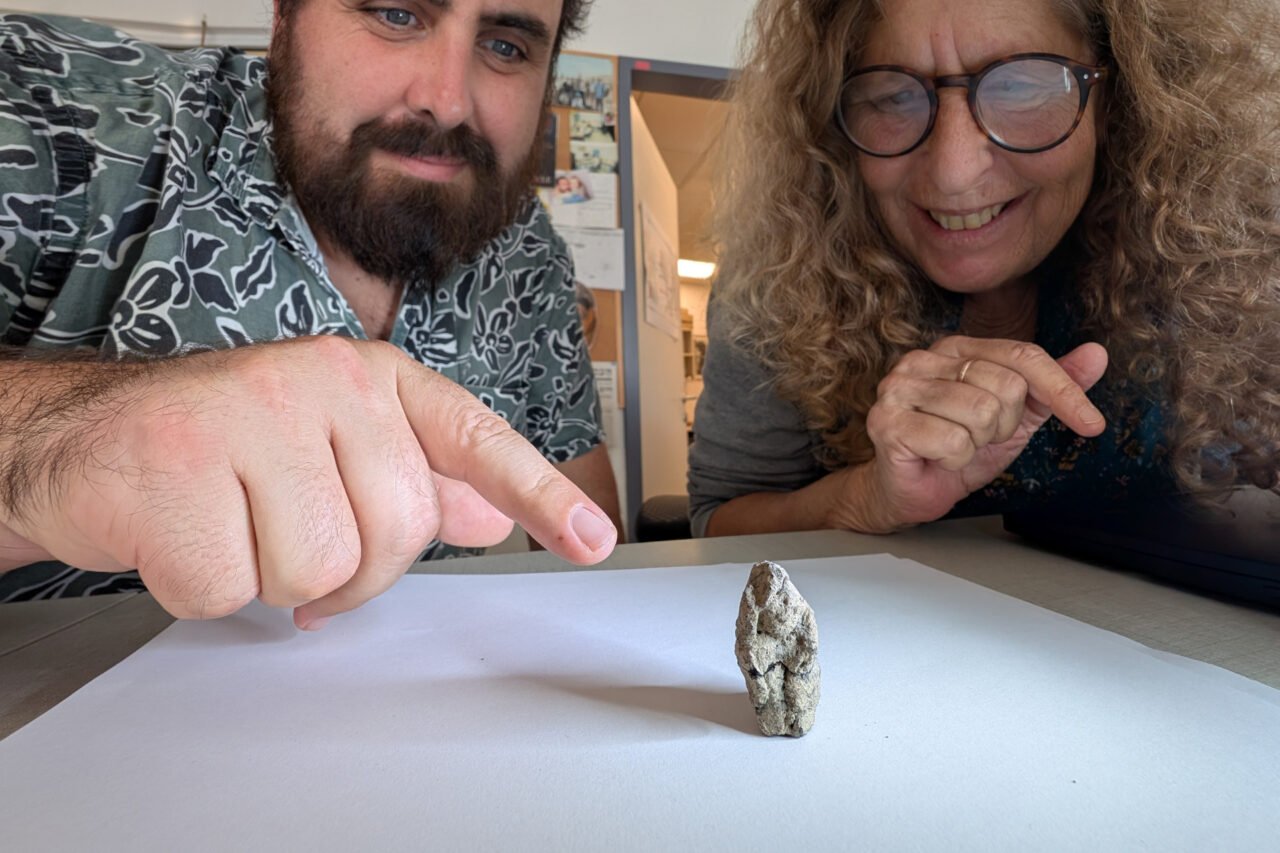Ancient Greek mythology is full of bestiality, including Zeus turning into a swan to seduce Leda, and Poseidon cursing Pasiphaë into falling in love with a bull. A new discovery in Israel, however, has revealed an artifact representing human-animal canoodling that dates back to thousands of years before the Odyssey. Archaeologists in northern Israel have uncovered a 12, 000-year-old clay figurine of a woman with a goose on her back and identified it as the earliest known figurine of human-animal interactions, shedding light on the development of prehistoric artistic and spiritual expression. “This discovery is extraordinary on multiple levels,” Laurent Davin, lead author of a paper published yesterday in PNAS and archeologist at the Hebrew University of Jerusalem, said in a university statement. “Not only is this the world’s earliest figurine depicting human-animal interaction, but it’s also the earliest naturalistic representation of a woman found in Southwest Asia.” Natufian sex The figurine came to light in a semicircular stone structure with burials and ceremonial deposits in an approximately 12, 000-year-old Late Natufian settlement. The Natufian culture was a prehistoric Mesopotamian culture that thrived between around 11, 000 and 9, 000 BCE, for which geese held symbolic value as well as practical significance-the animal was part of their diet. The figurine is 1. 5 inches (3. 7 centimeters) tall, was shaped from local clay, and was baked at around 400 degrees Celsius, indicating that the prehistoric community had control over early pyrotechnology. On it, Davin and his colleagues found traces of red pigment and a fingerprint likely belonging to a young adult or adult female artisan. The artifact represents a crouching woman with a goose on her back, with light and shadow lending the mini sculpture depth and perspective. While the figurine could be depicting a hunter carrying a hunted goose, the goose’s position indicates that it is alive and carrying its weight. “The forward leaning position of the woman is also inconsistent with the transport of prey weighing less than 5 kg. Given that a wild living goose would not naturally adopt such a posture on a human’s back, this representation seems to depict an imagined rather than an objective reality,” the researchers wrote in the paper. “Instead, the posture of the bird is an accurate naturalistic depiction of a gander (male goose) mating, by mounting the back of the squatting female,” they continued. Spiritual and ritual importance The team theorizes that the scene represents an imagined or mythological dynamic that aligns with animist beliefs, which consider humans and animals to be spiritually connected. In fact, animal remains from the archaeological site indicate that villagers used goose feathers as decorations and turned some goose bones into ornaments, strengthening the creature’s ritual significance. Furthermore, “the NEG II figurine captures a transformative moment,” said Leore Grosman, co-author of the study and an archaeologist at the Hebrew University of Jerusalem. “It bridges the world of mobile hunter gatherers and that of the first settled communities, showing how imagination and symbolic thinking began to shape human culture.” Here’s to hoping Natufian myth had a less catastrophic ending than some of the ancient Greek human-animal couples, cough cough, the minotaur and Helen of Troy.
https://gizmodo.com/12000-year-old-artifact-depicts-a-goose-having-sex-with-a-woman-2000687668
12,000-Year-Old Artifact Depicts a Goose Having Sex With a Woman


